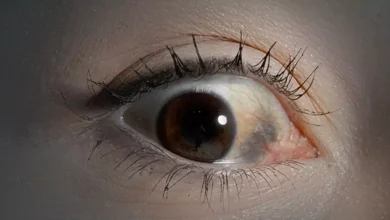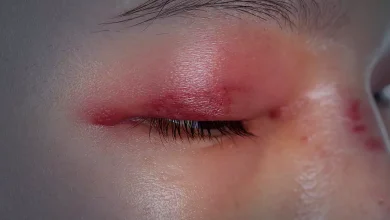All about Erythromelalgia ?

What is Erythromelalgia?
Erythromelalgia is a rare disorder where excessive blood flow leads to periodic symptom flares. It’s a chronic condition, which means it is a life-long condition and the symptoms might come and go. The symptoms usually include skin redness and a severe burning sensation which can make sleeping, walking, and other work difficult. Medications might help to ease the symptoms. Erythromelalgia usually affects your feet but can also happen on your arms, hands, face, and legs.
What are the Types of Erythromelalgia?
There are various types, including:
Primary erythromelalgia is isolated and does not occur because of an underlying disease.
- Idiopathic erythromelalgia is the most common form and happens because of unknown reasons.
- Inherited erythromelalgia occurs because of gene mutations. The mutations affect the pain signals and can be passed down in families.
Secondary erythromelalgia happens when there is an underlying blood, neurological, or immunologic condition including:
- Autoimmune diseases, including lupus and multiple sclerosis.
- Essential thrombocythemia, a blood disorder causing your body to create a large number of platelets.
- Polycythemia vera.
- Raynaud’s phenomenon.
- Thrombocytopenia.
- Neuropathy.
What are the Symptoms of Erythromelalgia?

The three primary erythromelalgia symptoms include:
- Rise in skin temperature.
- Pain that varies from mild tingling to intense burning.
- Skin redness.
Symptoms may also include:
- Itching.
- Skin becomes cold to the touch between flares.
- Unusual sweating.
- Swelling.
- Blotchy and tender skin.
- Tingling sensation.
Symptoms might happen on one or both sides of your body. They can vary from mild to severe. Some people might feel their first flare in childhood, while some aren’t affected till they reach adulthood.
What are the Causes of Erythromelalgia?
The exact cause of erythromelalgia is unknown. Erythromelalgia is believed to occur due to vasomotor abnormalities or dysfunction in the normal narrowing and widening of the diameter of some specific blood vessels, causing abnormalities of blood flow to the extremities. Erythromelalgia might be an isolated, primary condition or happen secondary to several underlying conditions. Primary erythromelalgia might happen randomly for reasons unknown or might be familial, which suggests autosomal dominant inheritance.
Flares because of erythromelalgia generally happen when you experience an increase in body temperature suddenly. This might occur when you are:
- Drinking caffeinated beverages.
- Dehydrated.
- Consuming alcohol.
- Consuming spicy food.
- Exercising.
- Feeling stressed.
- In a warm room or environment.
What are the Risk Factors of Erythromelalgia?
People with autoimmune diseases, including diabetes, lupus, Sjogren’s syndrome, or vascular disorders have an increased risk of developing erythromelalgia. Other health conditions such as myeloproliferative diseases and some neurological diseases including multiple sclerosis may also trigger it.
Primary erythromelalgia is more common among children and teenagers, while secondary erythromelalgia is more common among adults.
Heavy metal poisoning is also believed to be connected with erythromelalgia. This is likely to be because of toxic amounts of these substances, like mercury and arsenic, entering soft tissues in the body. Heavy metal poisoning might occur due to industrial exposure, air or water pollution, and exposure to foods, medicines, and lead-based paints.
Some medications, such as ergot derivatives, are also connected to erythromelalgia.
Certain diets have also been connected to erythromelalgia. Spicy foods and consuming high amounts of alcohol can trigger erythromelalgia flares.
Nerve damage from other conditions, such as sciatica and frostbite, are also risk factors for erythromelalgia, along with peripheral neuropathy, such as diabetic neuropathy.
What are the Complications of Erythromelalgia?
The complications of erythromelalgia might include ulceration, necrosis, and gangrene, and sometimes, wounds can become secondarily infected, which, if intense enough, might cause amputation.
How is Erythromelalgia Diagnosed?
There’s no specific test to diagnose erythromelalgia. Your doctor will review your symptoms and check for any active flare-ups or photos of flare-ups. Multiple tests might be needed to confirm your symptoms and to rule out other medical disorders including:
- Blood tests.
- Genetic testing to detect mutations responsible for the disease.
- Thermography, where a special camera is used to pinpoint differences in skin temperature.
- X-ray or other imaging studies.
What are the Treatment Options Available for Erythromelalgia?
The treatment that’s right for you is based on the cause. For secondary erythromelalgia, treating the underlying condition might ease the symptoms. Medications are included in the treatment for primary erythromelalgia.
Erythromelalgia treatment usually includes medicines that are taken orally. Many of these drugs are for other medical issues which can be effective to ease erythromelalgia symptoms.
Medicines usually include:
- Anticonvulsants, including gabapentin or carbamazepine.
- Antidepressants, such as amitriptyline or venlafaxine.
- Antihistamines, including cetirizine or diphenhydramine.
- Aspirin (for adults only).
- Blood pressure medicines to augment or reduce blood flow.
- Prescription painkillers.
Erythromelalgia treatment might also include:
- Lidocaine infusions, a pain medication you get intravenously in your arm.
- Nutritional supplements, including magnesium and alpha-lipoic acid.
- Pain management therapies, such as nerve blocks.
- Topical medications, including creams you apply to your skin.
Living with Erythromelalgia
Erythromelalgia is a rare and chronic condition that might result in episodes of pain and burning skin. There are various treatment options available, and they usually include medications. Sometimes medications are not good enough to ease symptom flares, which makes it difficult to go about your daily routine. But even with such setbacks, many people live a long and healthy life.
Whom to Consult?
If you experience symptoms of erythromelalgia, then consult with your doctor and get yourself diagnosed. Your doctor will start treatment according to the severity of the condition.




